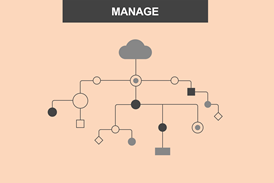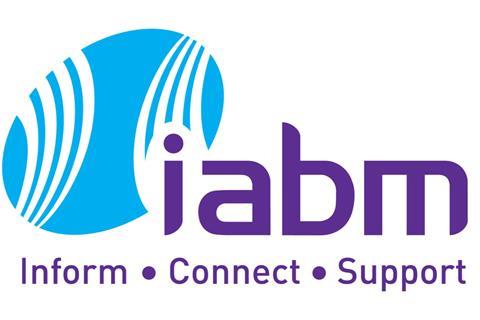Tech Papers 2021 – Page 10
-
 Technical Papers
Technical PapersThe full monty: Moving beyond the hybrid cloud
Many media companies are moving some of their video and visual effects workflows to the cloud, but leaving some components—such as primary data storage and editing workstations—on-premises.
-
 Technical Papers
Technical PapersVisual radio production for sport events
Sport coverage on radio is popular, but has specific requirements: people do other things while listening to radio, so any enhancements to the audio experience must respect this.
-
 Technical Papers
Technical PapersDelivery of High Dynamic Range video using existing broadcast infrastructure
4K Ultra High Definition (UHD) TV displays were introduced in 2012, with the promise of fundamentally changing television through having four times the spatial resolution of High Definition TV (HDTV), with 3840x2160 pixels.
-
 Technical Papers
Technical PapersThe art of 3-Dimensional content creation
It is only through the use of screen technologies recently developed for smartphones that VR headsets have become a potential mainstream consumer product.
-
 Technical Papers
Technical PapersMaking audio sound better one square wave at a time
For the past three decades, FM broadcasters have been engaged in what have become known as the “loudness wars”,
-
 Technical Papers
Technical PapersEmbracing 4K HEVC: Rethink, be revolutionary
The television industry is going through rapid change. The adoption rate of new formats and technologies is accelerating.
-
 Technical Papers
Technical PapersImproving content interoperability with the DASH content protection exchange format standard
The MPEG-DASH ecosystem is growing quickly, and a significant portion of the content being prepared and delivered is protected content.
-
 Technical Papers
Technical PapersSecuring the digital home
Your smart thermostat automatically adjusts the temperature when you’re away.
-
 Technical Papers
Technical PapersAvatar-based sign language interpretation for weather forecast and other TV programs
Closed caption and sign language broadcasting are provided with the terrestrial digital television (DTV) services for deaf people in most countries.
-
 Technical Papers
Technical PapersHow to transmit 4K video and 10 Gbps using 60 GHz wireless
In this presentation we are going to look at some of the different challenges that 4K presents.
-
 Technical Papers
Technical PapersThe impact of subtitle display rate on enjoyment under normal television viewing conditions
The rate of subtitles is often highlighted in subtitling guidelines as an important factor in viewer understanding and enjoyment (2), but no scientific justification is provided.
-
 Technical Papers
Technical PapersHow AES-67, the new audio-over-IP standard, will bring the convergence of telecommunications, studio audio, and intercom
At the present time, audio technology is leveraging audio over IP technology at the basic network transport level, but is not taking advantage of all the benefits that are possible.
-
 Technical Papers
Technical PapersMore is more: Investigating attention distribution between the television and second screen applications...
Second screen applications are becoming more and more popular and widespread due to the growing popularity of tablets and smart phones.
-
 Technical Papers
Technical PapersEnhancing MPEG DASH performance via server and network assistance
Over the last few years, HTTP-based adaptive streaming has become the technology of choice for streaming media content over the Internet.
-
 Technical Papers
Technical PapersArchitectures and protocols powering illegal content streaming over the internet
The history of pay-TV [1, 2, 3], considering the business at stake, is unsurprisingly tightly coupled with the history of content services piracy, effectively proving the saying that “security is a process, not a product” in this industry.
-
 Technical Papers
Technical PapersWireless distribution of audiovisual media services
There has never been more content available and consumed then there is today. The huge popularity of media is not new.
-
 Technical Papers
Technical PapersImproving user experience when HTTP adaptive streaming clients compete for bandwidth
The increasing number of connected displays is driving the current explosion of Internet video traffic.
-
 Technical Papers
Technical PapersUsing IMF for international distribution: What does that mean?
Speed reading can often lead to misinterpretation. The title of this paper, “USING IMF FOR INTERNATIONAL DISTRIBUTION”, is intentionally ambiguous, hence the subtitle WHAT DOES THAT MEAN? Assuming that you interpret IMF as SMPTE’s Interoperable Mastering Format (1), the ambiguity comes from the word using.
-
 Technical Papers
Technical PapersTV Insights – Application of Big Data to television
The advent of the Internet and the resulting volume of data that needs to be managed, stored, and analysed led to the emergence of modern day Big Data technologies.
-
 Technical Papers
Technical PapersCoexistence between LTE and DTT – practical experience following the clearance and relicensing of 800 MHz spectrum in the UK
An interference mitigation programme is underway in the UK and this has led to an improved understanding of real-world TV reception and interference prediction and mitigation.








































